Best bikes for bikepacking: A buyer's guide
Looking for a bike that’s lightweight, fits wide tyres and has more mounting points than you currently have bags? Here are the best bikes for bikepacking.
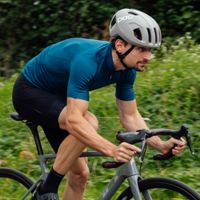
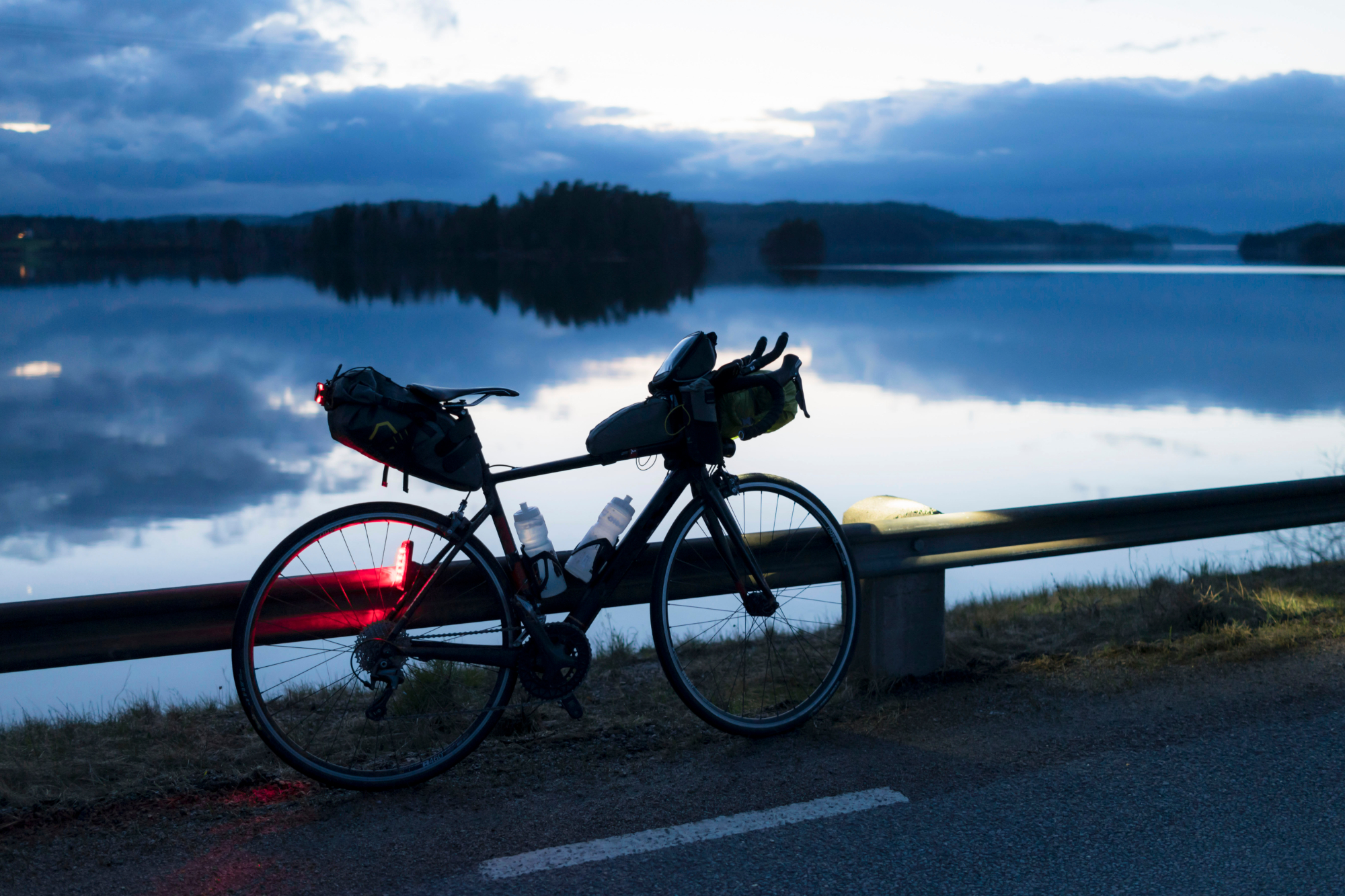
With the stratospheric rise in the popularity of bikepacking, there is an increasing number of bikes that are designed specifically to best meet the demands of this style of riding.
Although you could put a frame, handlebar and giant saddle bag on any kind of bike and head out on a multi-day adventure, the best bikes for bikepacking are purpose built and incorporate design elements that make the whole experience that much better.
A more relaxed and upright geometry, combined with the ability to run wider tyres, such as the best gravel bike tyres, both serve to make a long day in the saddle a lot more comfortable. To save you from grinding away every time the gradient tips above a certain level, lower gears can make your trip a lot less fatiguing.
A lightweight frame really helps complement the benefits of bikepacking over traditional cycle touring, while the best bikes for bikepacking have extra mounts for attaching bags and other things to your bike makes it easier to bring all you need.
The best bikepacking bags weigh a lot less than a full pannier set up and - in being more in line with the bike, rather than sticking out to the sides - they are significantly more aerodynamic. This allows you to travel further and faster, enabling you to see more of the world when out on your trip.
Clothing for bikepacking, like the best cargo bib shorts, helps you to carry more as well.
If you're new to bikepacking then you can always check out our guide to what you need to take on your adventure.
But first up is our choice of the best bikes for bikepacking. We've tested a range bikes, taking them on short journeys and long across a range of terrain. We've taken into consideration a number of factors, including comfort, ride quality and ease of maintenance as well as their general ability to carry loads.
Meet the testers

Paul started writing for Cycling Weekly in 2015 and since then he’s reviewed hundreds of bikes and thousands of other pieces of cycling equipment. He’s been cycling for a lot longer than that though and his travels by bike have taken him all around Europe and to California. He’s been riding gravel since before gravel bikes existed too, riding a cyclocross bike through the Chilterns and along the South Downs.
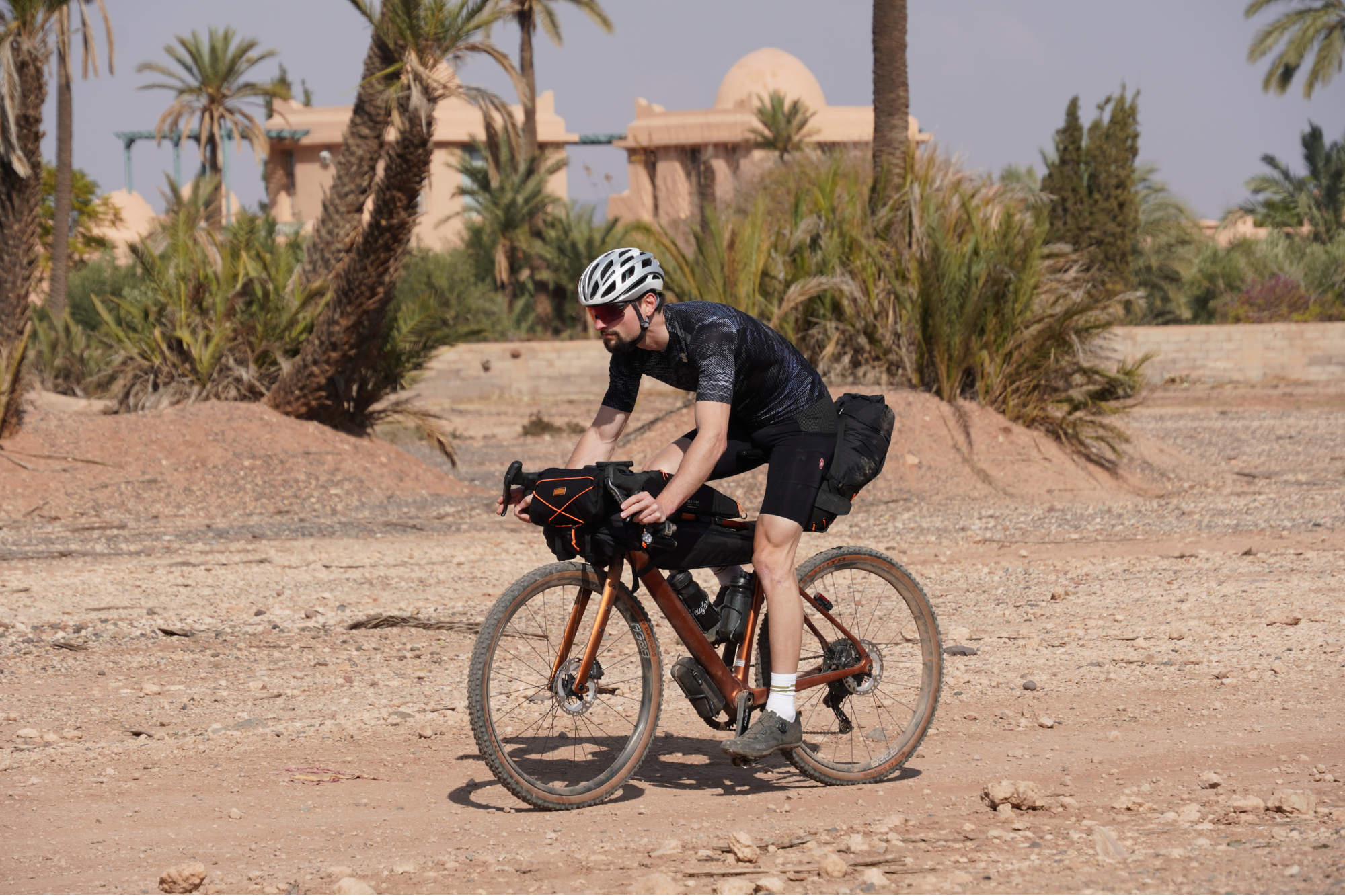
After winning the 2019 National Single-Speed Cross-Country Mountain Biking Championships, Stefan swapped the flat-bars for drop-bars and has never looked back. Since then, he’s earnt his 2nd cat racing licence and Everested in under 12 hours. But Stefan's favourite rides are multiday bikepacking trips, with all the huge amount of cycling tech and long days spent exploring new roads and trails - as well as histories and cultures.
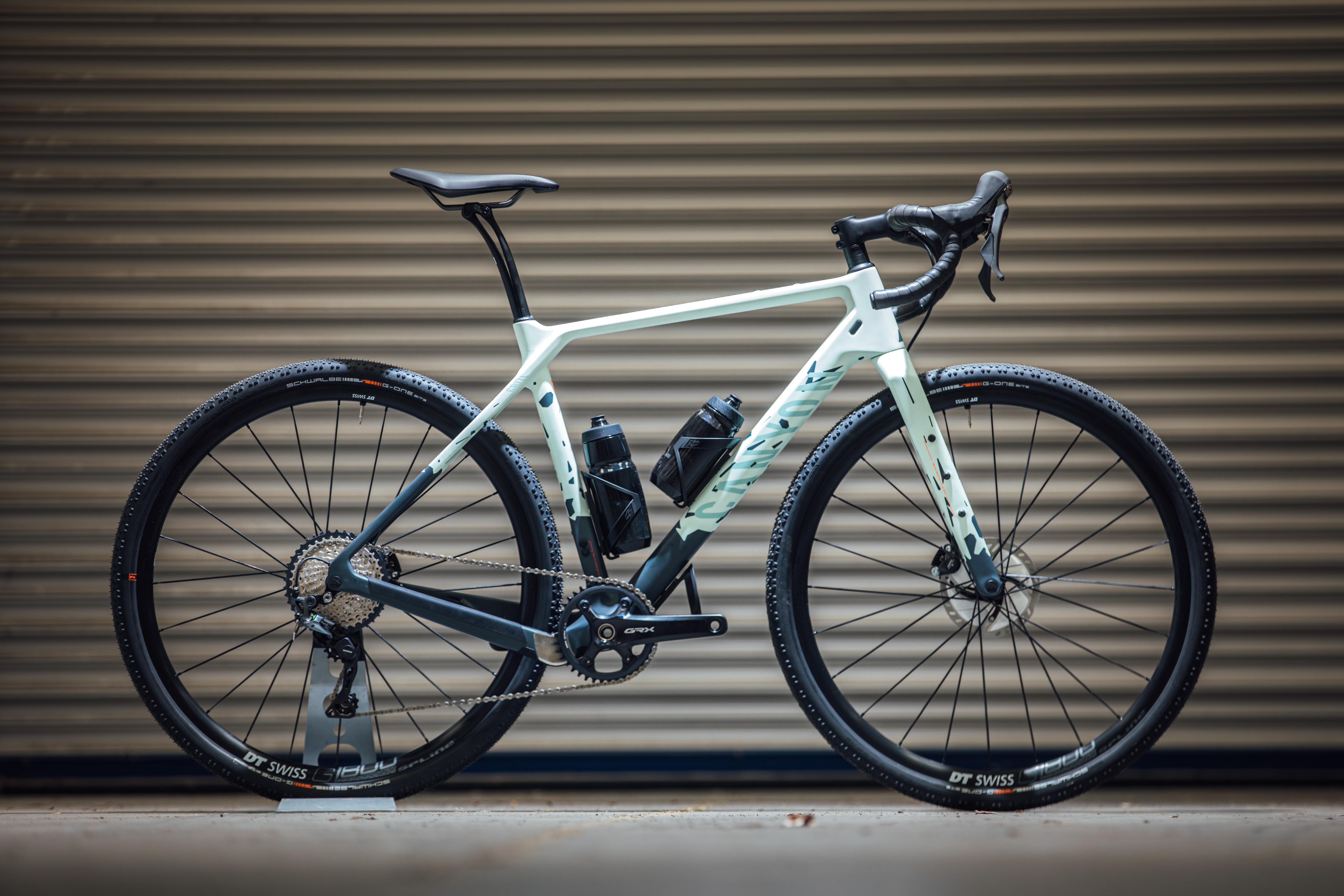
Canyon's Grizl offers plenty of tire clearance and a number of mounting points
Specifications
Reasons to buy
Reasons to avoid
Maximum tire size: 700 x 50c
Extra mounting points: Down tube, top tube, forks
The Grizl has bags of tire clearance - on test we ran 45s but it can handle up to 50c. This alone makes it a solid choice for any off-road bikepacking trip. Throw in the copious number of mounts - including triple mounts on the forks - and you have a bike that's pretty well set for your next multi-day cycling adventure.
Our review bike came equipped with DT Swiss G1800 wheels that provide plenty of durability while still being fairly lightweight. The groupset is Shimano's reliable GRX 800 - on test we rode the 1x set-up and felt that for the best bikepacking set-up the 2x option would be better suited thanks to its wider range and smaller jumps. The 40t chainring matched to a 11-42t cassette worked fine without a load but fully laden it was just a bit too steep.
For 2022 Canyon released the Grizl in a number of builds, including a CF CL 8 with a suspension fork and the aforementioned CF CL 8 with Shimano's GRX RX810 2x groupset.
Read more: Canyon Grizl CF Sl 8 full review
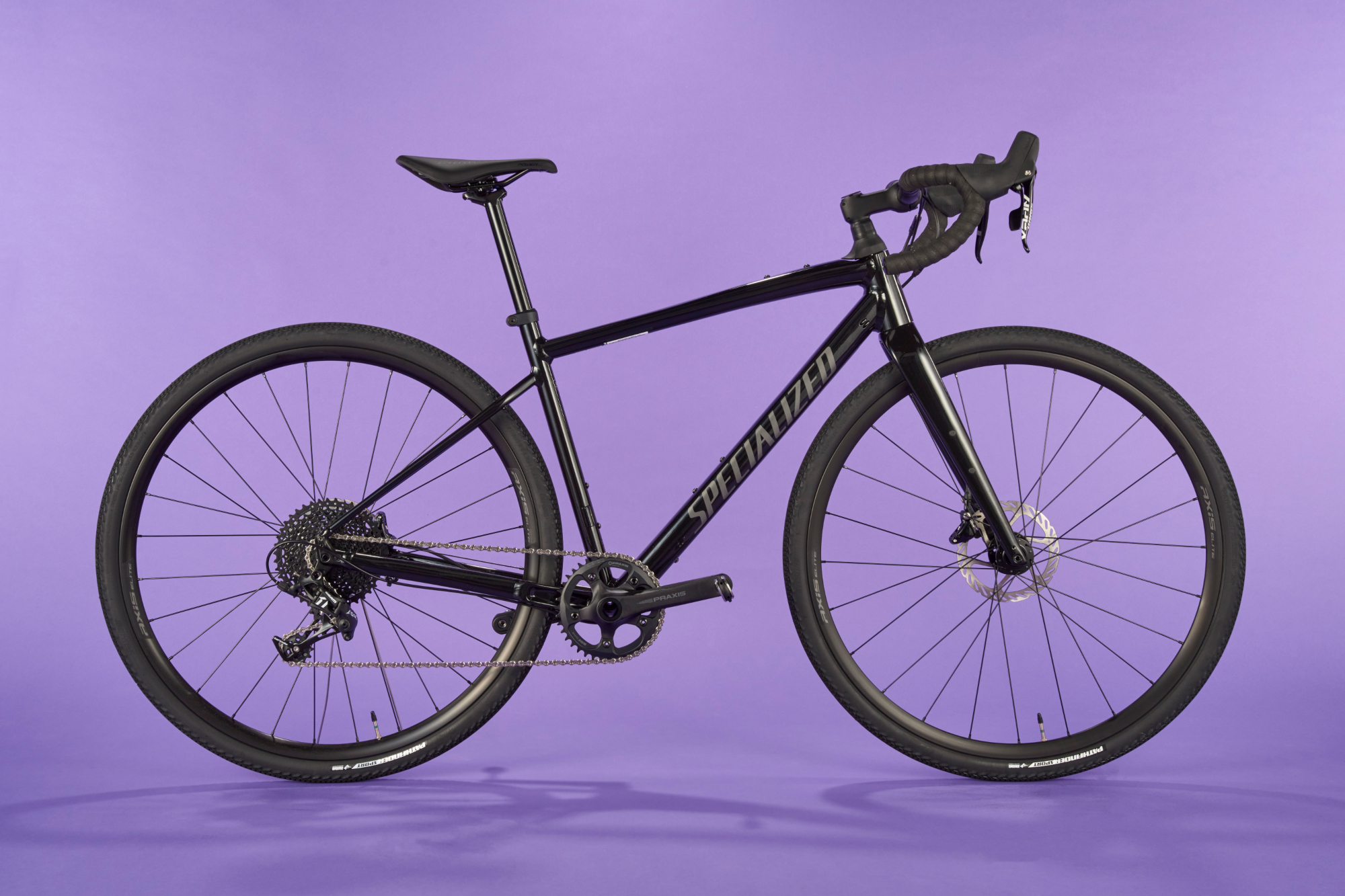
Specialized's Diverge has enough extra mounting points to make it very bikepacking friendly indeed
Specifications
Reasons to buy
Reasons to avoid
Maximum tire size: 700 x 47c / 650b x 2.1 inch
Extra mounting points: Downtube, toptube, forks
A feature unique to Specialized, which really helps with bikepacking, is the SWAT storage system in the downtube. Accessed by a discreet hatch, it allows you to make use of the space inside the frame for storing your tools, food, or whatever else you fancy. Also unique to Specialized is the Future Shock 2.0, which provides 20mm of hydraulically damped suspension, helping to reduce fatigue on rougher terrain.
There are plenty of mounting points dotted across the carbon frame, including a set of bottle bosses on the underside of the downtube and on the top tube. The fork comes with a couple of mounting points too. Although the frame can handle 700x47c, the bike comes specced with a set of 38c semi slicks, offering a good balance for on- and off-road riding.
The versatility of this bike for riding on and off road impressed our reviewer, earning it a 9/10. The 2x11 Shimano GRX groupset provides a good range of gears and smaller jumps between them than a 1x set up, ensuring that this bike is very well suited for a bikepacking adventure with an even mix of gravel and roads.
However, for 2022 Specialized have also released a 1x Diverge Comp Carbon that retails at £4, 500 and uses SRAM's mechanical 11-speed Force 1 groupset. Other changes include the 42mm Pathfinder tires that feature a tread pattern suitable for road, dirt and gravel tracks.
Read more: Specialized Diverge Comp Carbon full review
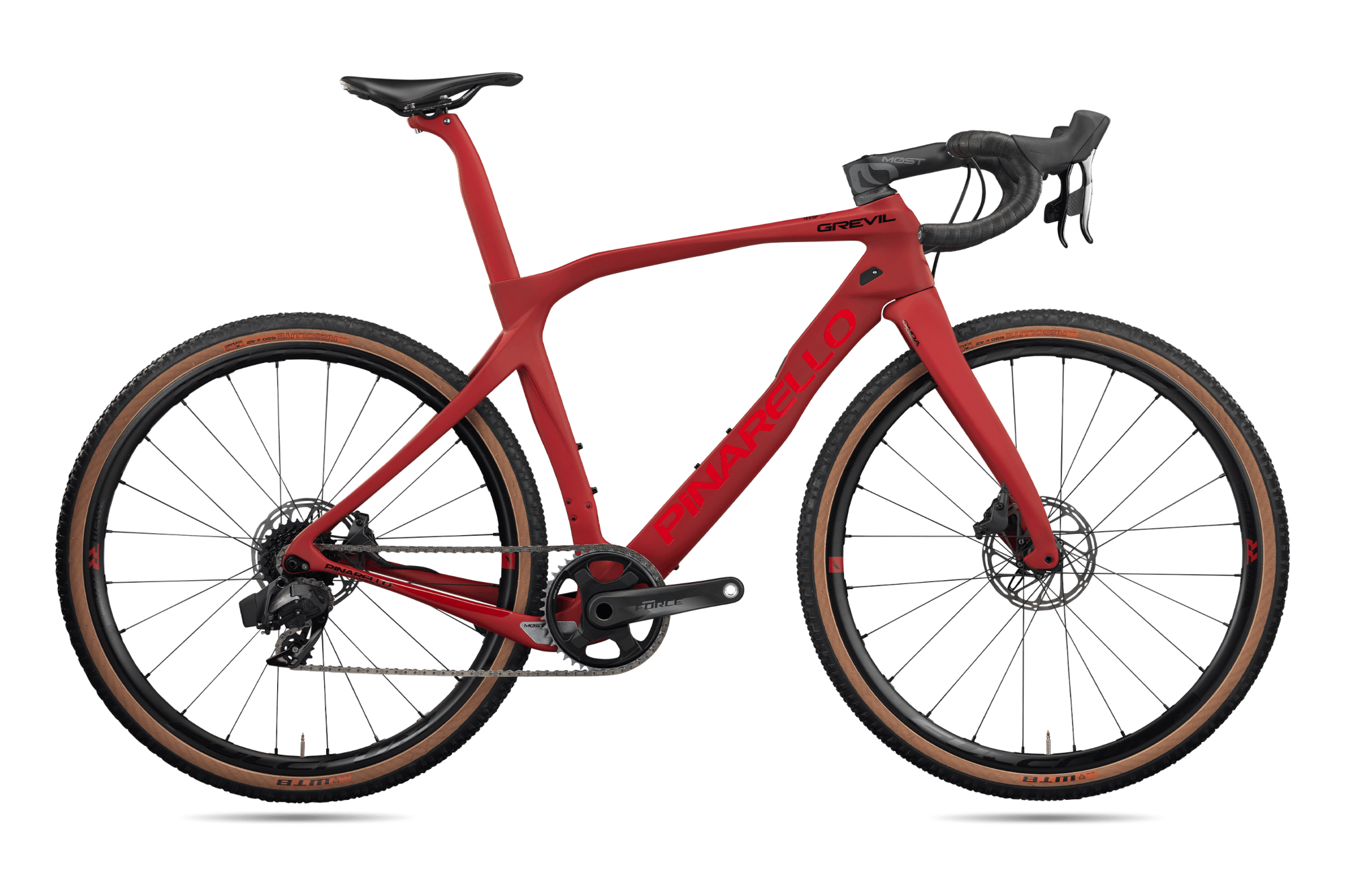
The Grevil is best suited for a lightweight bikepacking set-up
Specifications
Reasons to buy
Reasons to avoid
Maximum tire size: 700 x 42c / 650b x 2.1 inch
Extra mounting points: Downtube
As you would expect from the bike brand that has been ridden to five Tour de France victories, they have a focus on speed. The full carbon frame shares a similar aerodynamic profile to the Grand Tour-winning Dogma F12, but can accommodate far larger tires.
When we reviewed the Grevil it came equipped with a Shimano Ultegra groupset. However, newer models are now offered with 1x groupsets from Shimano, SRAM and Campagnolo.
There are significantly fewer mounting points on this bike compared to others, with a set of bottle bosses on the underside of the downtube the only addition over the standard two inside the mainframe. But, on a bike as fast as this, you’re going to want to go for a pretty lightweight set up to really capitalise on its strengths - so the fact there isn’t room for bringing the kitchen sink isn’t much of a loss. It's a bikepacking bike for the minimalist.
Read more: Pinarello Grevil full review
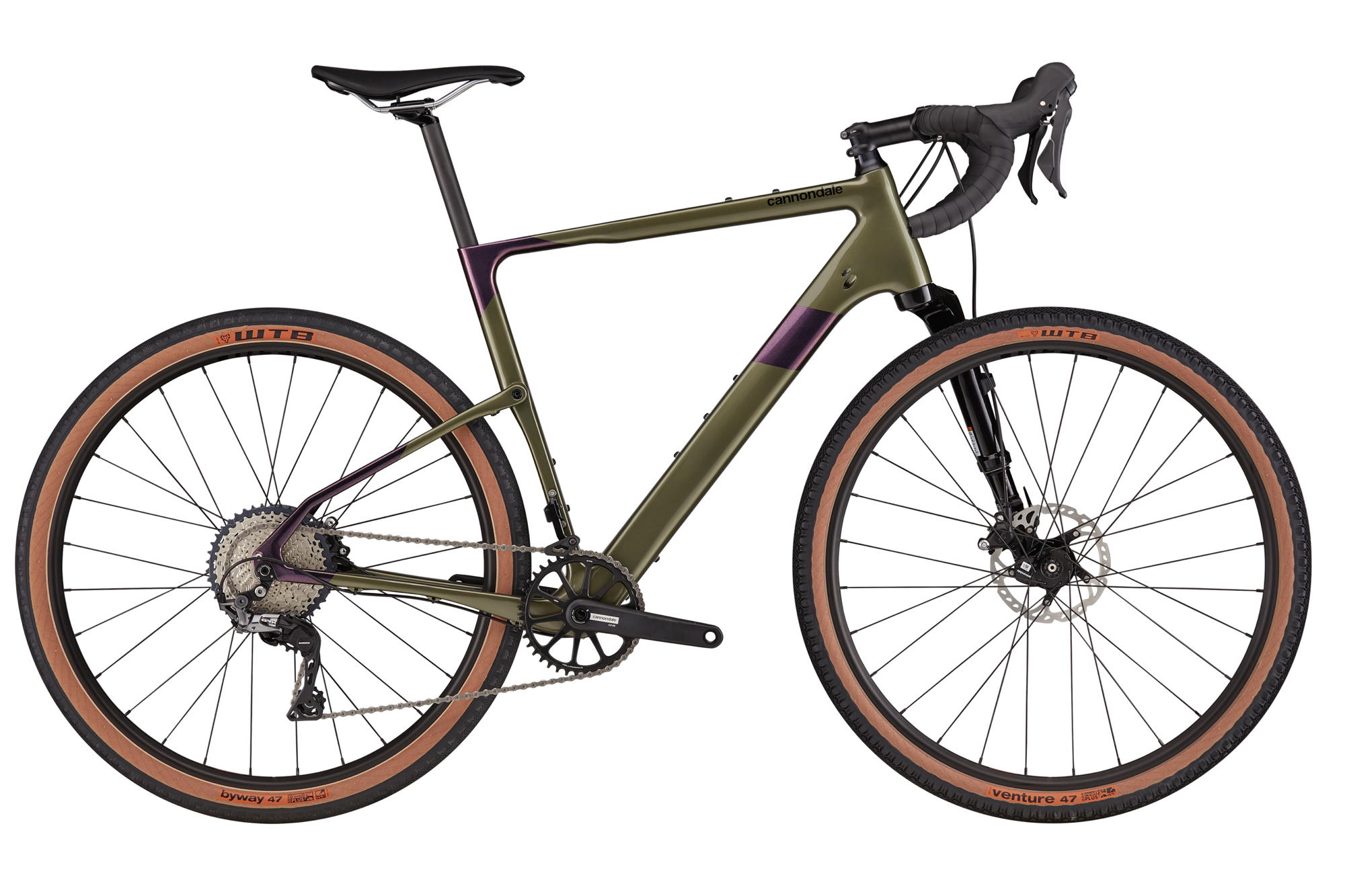
The Topstone Lefty 3 features Cannondale's weird and wonderful signature suspension fork
Specifications
Reasons to buy
Reasons to avoid
Maximum tire size: 700 x 37c / 650b x 47mm
Extra mounting points: Downtube, toptube
For greater comfort and control on rough terrain, Cannondale’s carbon Topstone with a lefty fork and Kingpin rear suspension system give 30mm of travel. The needle bearings of the fork make it very supple and subject to far less stiction than other suspension systems. On a more practical level, in doing away with the right leg of the suspension, you don’t even have to remove the front wheel to fix a puncture!
The rear suspension works essentially as a leaf spring. There’s a pivot at the point where the seatstays meet the seattube, which allows the chainstays to flex vertically. This mechanically simple solution means there is not much to wrong and it doesn’t add much weight—two things you want when bikepacking.
However, during out testing we found there wasn't as much tire clearance here compared to other bikes, which is a bit of a shame as it would be great to really double down on the ability to handle the rough stuff. But even so, it is definitely the bike to pick for a gnarlier multiday adventure.
Read more: Cannondale Topstone carbon Lefty 3 full review
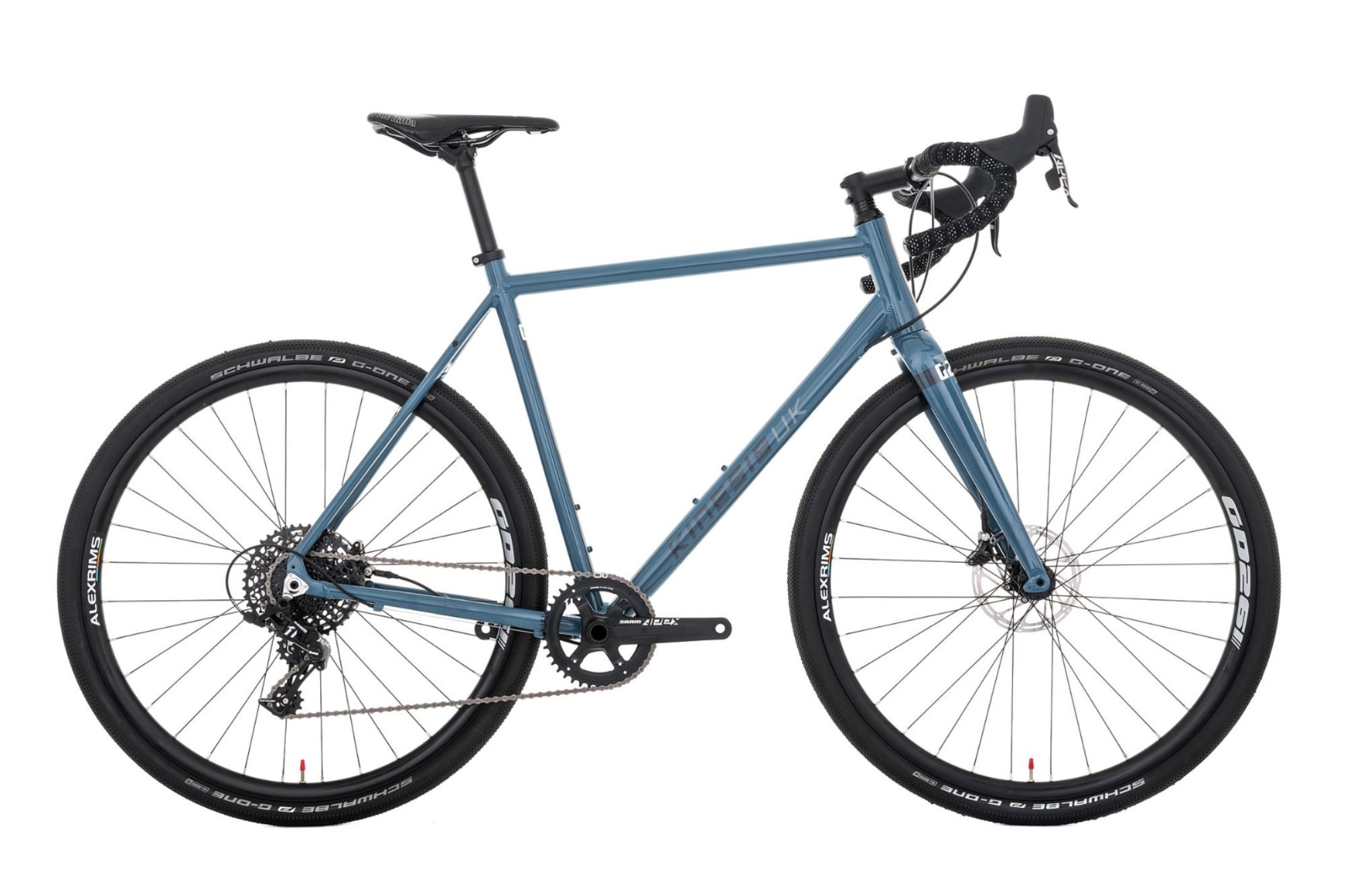
The versatile G2 performs well for adventures on road and off
Specifications
Reasons to buy
Reasons to avoid
Maximum tire size: 700 x 45c
Extra mounting points: Rear rack
A bike doesn’t have to cost the earth to function well for bikepacking. Although the fancy aero tube shapes of other bikes are absent on the Kinesis G2, this robust aluminium frame will serve you faithfully for many trips to come. There is plenty of clearance for wider tires, so off-road adventures are definitely on the cards.
The gearing is a little on the narrow side, being only 1x11, but there are benefits in simplicity here. Not only is there no front derailleur to go wrong, there’s also no batteries to forget to charge as well. The geometry of the bike is designed to be a little more upright and offer controlled steering - during our testing we certainly found this to be true.
Read more: Kinesis G2 full review
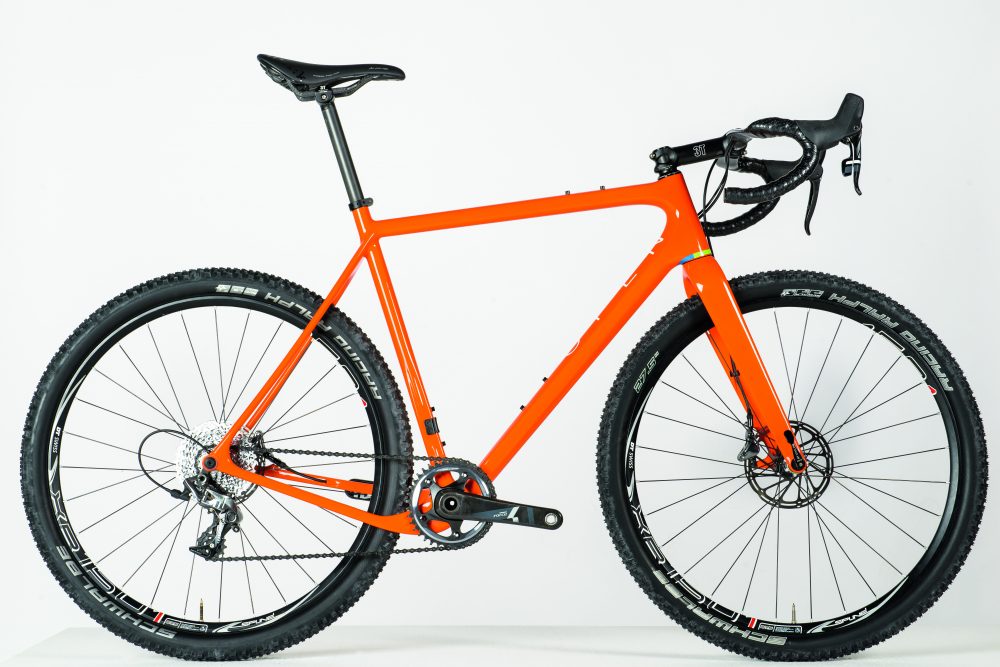
Specifications
Reasons to buy
Reasons to avoid
Maximum tire size: 700 x 40c / 650b x 2.1 inch
Extra mounting points: Downtube, toptube
The large amount of space in the main triangle means this bike is well suited for a half - or full - frame bag. Although it can take very wide rubber, the frame has been designed to still function well with tires as narrow as 28c, making this an incredibly versatile bike that will be able to handle all forms of bike packing. Our reviewer found it performed well both on tarmac and on less technical trails.
The carbon frame is very lightweight but pleasingly this hasn’t been at the sacrifice of pedalling efficiency, as the dropped chainstay on the driveside maximises bottom bracket stiffness while retaining a narrow Q factor. It combines to make a bike that is well suited to travelling the distances typical of a bikepacking trip.
Read more: Open U.P full review

3T's Exploro is a lightweight frameset that boasts huge tire clearance
7. 3T Exploro
Specifications
Reasons to buy
Reasons to avoid
Maximum tire size: 700 x 40c / 650b x 2.1 inch
Extra mounting points: Downtube, toptube
3T offers its Exploro frameset in a variety of builds. For the ultimate in dropbar 1x gearing range there’s a SRAM AXS ‘mullet’ set-up, with road shifters paired with a mountain bike cassette and derailleur. This gives you enough range to not spin out on the road and still be able to turn the pedals on the steepest of gravel climbs. The wide spread means there are large jumps between gears, so if you are particularly sensitive about your cadence, this is not the set up for you.
Other options include the more affordable Exploro Pro Rival, fitted with 700c wheels and SRAM's Rival 1 groupset, as well as 2x option that's utlizes SRAM's Rival eTAp AXS groupset - a build option well-suited to bikepacking trips that blend both on and off-road riding.
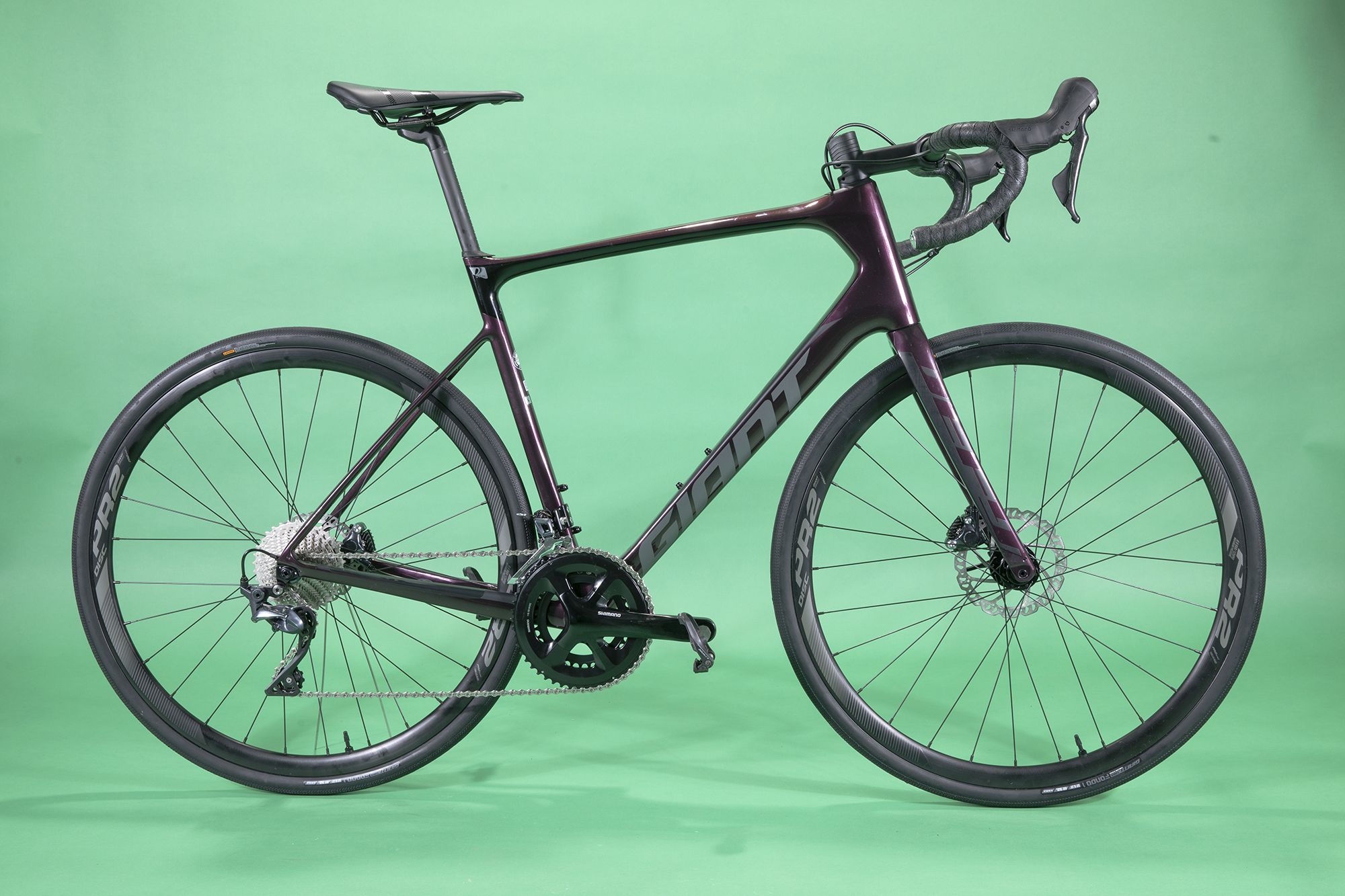
The Defy is worthy of consideration for those who bikepacking trips take in plenty of tarmac
Specifications
Reasons to buy
Reasons to avoid
Maximum tire size: 700 x 35c
Extra mounting points: None
For bikepacking adventures that focus a little more on the tarmac side of things, this is a fast and uncompromising option from Giant. We found during our testing that the Defy's endurance geometry means you will be in a comfortable position for an all-day ride, while maintaining aero features such as a dropped seatstay and kammtail tube shapes.
The gearing is pretty wide with a compact chainset paired with an 11–34 cassette giving you a 1:1 bottom gear, which should be enough to cover everything the bike is designed for. With a maximum tyre size of 35c, a bit of light gravel can be dispatched without a problem. But if you plan on extended periods off road, there are other bikes that are perhaps more suitable.
There aren’t any extra mounts aside from the standard two bottle cages, so this isn’t a bike for a heavily loaded trip. But for a short and fast jaunt, the greater road focus really helps speed things along.
Read more: Giant Defy Advanced 1 full review
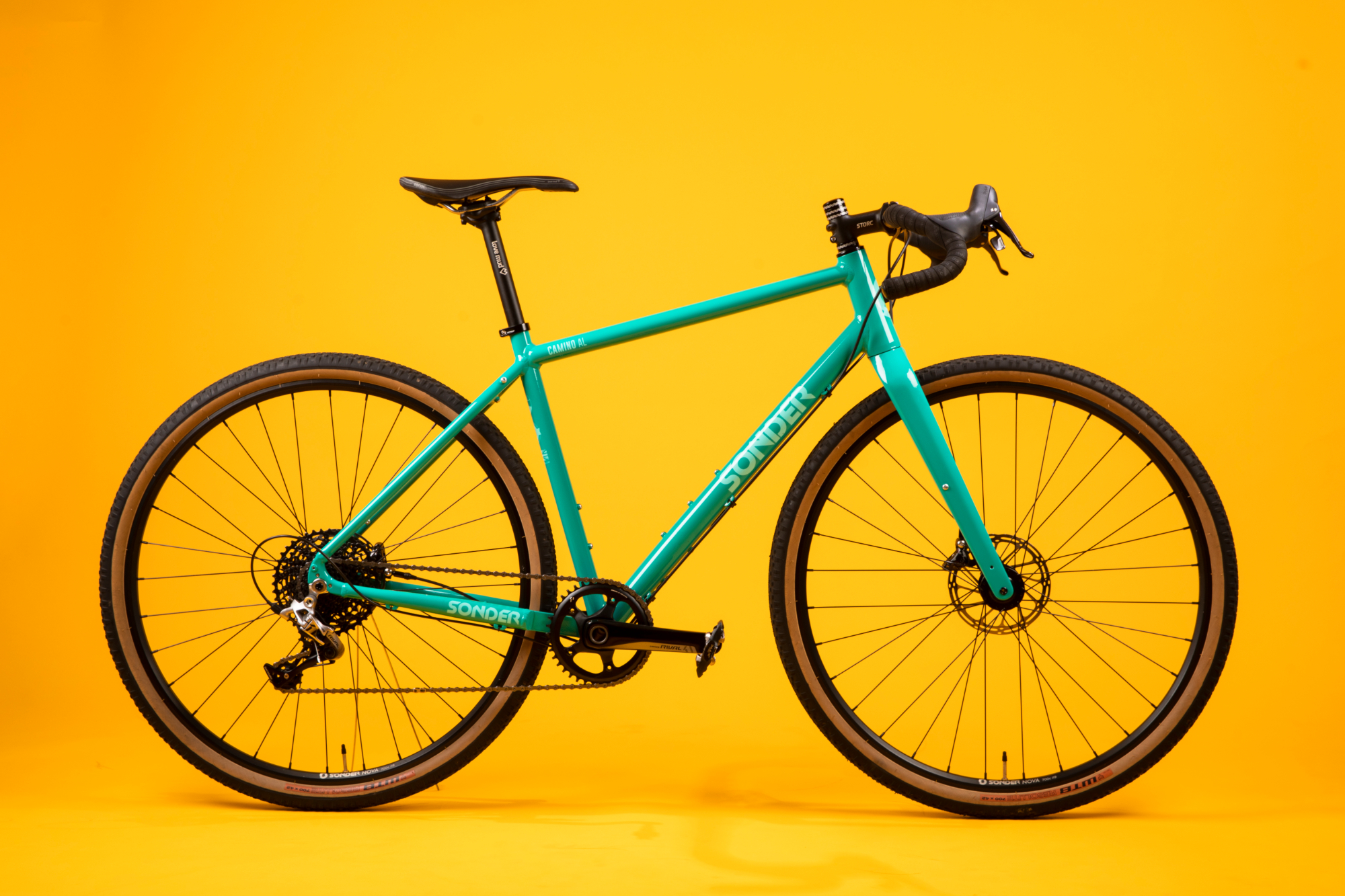
Sonder's versatile Camino bike is offered in a number of build options
Specifications
Reasons to buy
Reasons to avoid
Maximum tire size: 700 x 50c / 650b x 2.1 inch
Extra mounting points: Downtube, toptube, rear rack
Available both in aluminium and titanium, there are options for those on a budget as well as those looking for a dream build. Regardless of the chosen material, both frames feature the same design elements that make this an incredibly practical bike.
During testing we appreciated that the cables are external and fully housed, making them well-sealed from any grime degrading shifting quality. They are also a lot easier to work on should you be unfortunate enough to be subject to a mid-ride mechanical.
Downtube bottle bosses, mounting points on the carbon front fork, discrete mounts for mudguards and the ability to take a pannier rack make this bike capable for carrying large loads. Keeping the steering under control and inspiring confidence on technical descents are the slack head angle together with the long wheelbase.
Current 2022 build options include SRAM Apex 1 and Force 1 and Shimano GRX 1 as well as as Shimano 105. Sonder are also now offering builds utilizing SRAM's electronic AXS XPLR groupset.
Read more: Sonder Camino AL full review
Best Bikes for Bikepacking Buyers Guide
What frame mounts do I need to go bikepacking?
There’s a dizzying array of different ways to attach your luggage to your bike. One of the most common is a set of downtube bottle bosses. This is a great place to keep a tool keg, as the space where you might normally keep your tools (behind the saddle) will be taken up by a giant saddle bag. Storing them under the downtube keeps your tools accessible and the weight low on your bike.
Top tube bosses are a nice to have, but not a must, as toptube bags generally do a pretty good job of staying in place. A more significant addition is a set of bosses on the front forks to fit an ‘anything cage’. With the size of giant saddle bags, it’s quite easy to end up with a lot of weight quite far back on the bike. Being able to mount things on the fork is a good way of evening up your weight distribution and makes the most of available space - even if it is a bit less aero.
Lightweight bikepacking bags are good for a fast and quick trip, but the classic combination of a rack and panniers is a good way for carrying more things in a longer and more relaxed trip. If you aren’t a fan of rubbing your knees on frame and top tube bags, this can be a good option for keeping your kit out of the way.
If you are heading off road, a set of conventional mudguards (fenders for our US friends) isn’t the best option. But for those who are bikepacking mainly on roads, keeping the spray off can make a journey far more pleasant. You don’t have to use them but going for a frame with that capability keeps your options open for the future.
What are the best tyres for bikepacking?
Wider tyres are more comfortable and - as is broadly accepted now - don’t hamper rolling resistance too much, actually being faster in some circumstances.
32c tyres are fine for bikepacking on mainly roads, but if you are going to be mixing roads and gravel, 38c makes a better option. If you’re going mainly off-road 700 x 45c - or even as far as a 650b x 2.1 inch MTB tyre - will provide better comfort and control.
Tread pattern is also an important consideration. If you are going to be ridding in deep loam or sloppy mud, you’ll need a tyre with knobs to dig in and provide some mechanical grip. On the road, tread pattern is less important, with the size of the contact patch being the greatest determinant of grip. For mixing road and gravel, a semi slick will be the best option, providing low rolling resistance in the centre of the tyre, but with knobs that will dig in when cornering on soft surfaces.
What gears suit the topology you’ll be riding
What gears are the best for bikepacking?
With the extra weight of your luggage, you’ll need lower gears than you’d normally ride. When bikepacking on mainly roads, you’ll want a low gear somewhere around a 1:1 ratio. This can be achieved using a 50/34 crankset with an 11–34 cassette, but there is a number of other combinations that will provide an equivalent low gear.
With the extra resistance and steeper climbs that you’re faced with off-road, easier gears are needed. Having at least one gear smaller than a 1:1 ratio is advisable. A SRAM AXS 2x12 set up with a 43/30 crankset and 10–36 cassette or a Shimano 46/30 crankset with an 11–34 tooth cassette will both provide small enough gears. Increasingly, we’re seeing SRAM 12 speed mountain bike cassettes paired with drop shifters, providing a massive spread of gears but using only one chainring.
What is the best frame material for bikepacking?
What frame material is best for a bikepacking bike depends on your budget and your intended use. A carbon frame will be lighter and can be made very compliant, thanks to the control manufacturers have with the carbon layup. If you want to travel light and fast, carbon is a good option as it can also be moulded into aerodynamic shapes.
Aluminium is cheaper, but not as light nor as aero. A lot can be done to improve the ride quality, with tubes of varying in thickness down their length and with different cross-sections. However, even with that, aluminium tends not to have as good a ride quality as carbon. But it is more robust. If you are going to be demanding a lot from your bike, with rocky off-road excursions, this could be the better material.
Steel and titanium have their own benefits, a unique ride quality combined with robustness and - in the case of titanium - pretty lightweight as well. But there are fewer bikes made from these materials.
What is the best frame geometry for bikepacking?
You will want quite a relaxed riding position, one that is suited to many hours in the saddle. A higher front end and shorter stem can help facilitate this. It also takes more pressure off your hands, which can be very important as riding for a long period with your weight going through your hands can damage the ulnar nerve in your wrist. So common is this issue, that the condition also goes by the name ‘cyclists’ palsy'.
In terms of frame geometry, something that has a more relaxed head angle and longer chainstays will make you feel more in control and will make the steering feel more planted, just what you want when you’re tired from riding all day.
How we test
Where we've been able to link to a review, it means that we've put the bike through its paces. This means we've ridden it across a variety of terrain to assess it's suitability for bikepacking adventures while considering factors such as its ride quality, comfort over longer distances and its suitability for holding and handling bikepacking bags. Our testers are all experienced gravel riders and include the guide's author Stefan Abram, who's undertaken several multi-day bikepacking adventures both in the UK and abroad.
Where we haven't yet had the chance to review an item, we're still confident in recommending it as one of the best, because we either know the brand really well, and have probably tested another product or the previous version and can still happily recommend it as one of the best.
The latest race content, interviews, features, reviews and expert buying guides, direct to your inbox!

After winning the 2019 National Single-Speed Cross-Country Mountain Biking Championships and claiming the plushie unicorn (true story), Stefan swapped the flat-bars for drop-bars and has never looked back.
Since then, he’s earnt his 2ⁿᵈ cat racing licence in his first season racing as a third, completed the South Downs Double in under 20 hours and Everested in under 12.
But his favourite rides are multiday bikepacking trips, with all the huge amount of cycling tech and long days spent exploring new roads and trails - as well as histories and cultures. Most recently, he’s spent two weeks riding from Budapest into the mountains of Slovakia.
Height: 177cm
Weight: 67–69kg